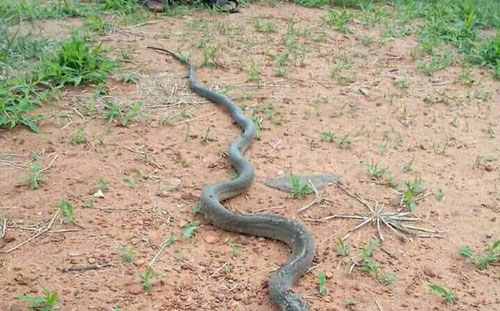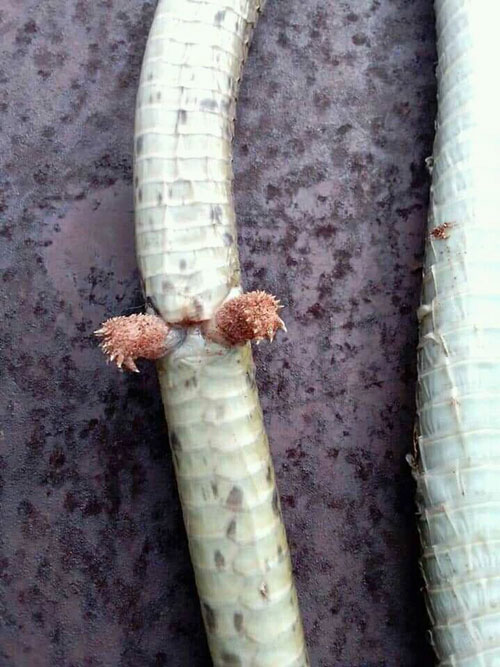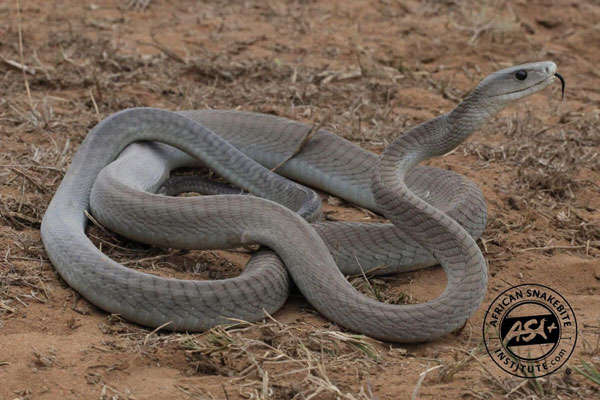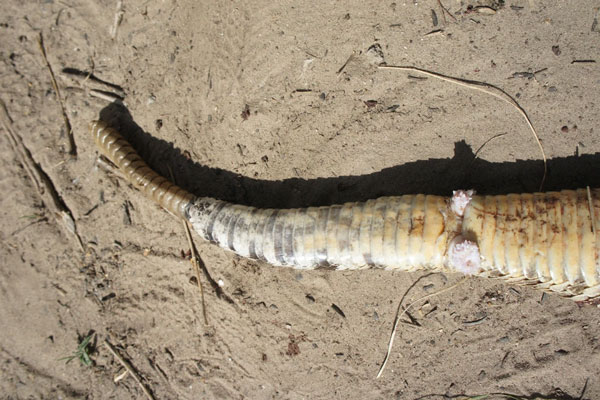This is a creature with a ‘death kiss’.
On the Facebook group Snake Identification Help Forum, members share images of various snake species to help each other identify their names. A member named Ompoetse Dorlkid Ntema posted two photos.

What kind of snake is this?

‘Two legs’ of the snake?
We all know that snakes are legless reptiles (although their ancestors, the prehistoric Eupodophis descouensi from the Cretaceous period, had legs), but why does this snake appear to have ‘two legs’?
The snake in question is actually a very famous species known for its extremely potent venom; it is one of the most venomous terrestrial snakes in the world: the Black Mamba (scientific name: Dendroaspis polylepis). This species is endemic to sub-Saharan Africa.

Black Mamba. Photo: Sanbi
Their name comes from the color of the inside of their mouth, not their body color. Their bite is dubbed the ‘death kiss’ because the venom of this snake is three times more potent than that of the African Cobra, five times more potent than that of the King Cobra, and forty times more potent than that of the Gaboon Viper.
Victims will experience total paralysis within 45 minutes of being bitten if not treated promptly and will die shortly thereafter due to the Black Mamba’s extremely powerful neurotoxin. Even more frightening, this venomous snake is also one of the fastest-moving snakes (20 km/h).
So, since the Black Mamba has no legs, why does this snake appear to have these appendages?
The reason is quite simple; the ‘two legs’ of the snake are actually not legs at all but are two hemipenes. Each snake has two hemipenes, which look quite similar to legs because they have many sharp protrusions resembling claws.

Two hemipenes of a rattlesnake. Photo: Researchgate
This is an external reproductive organ of scaled reptiles such as lizards, snakes, and skinks. Normally, this organ is kept inverted and resides within the cloaca of the body.
It only becomes visible during mating due to erectile tissue; the creature uses its hemipenes to transfer sperm through a tube-like structure. During mating, they will only use one hemipenis at a time and will alternate between the two.


















































